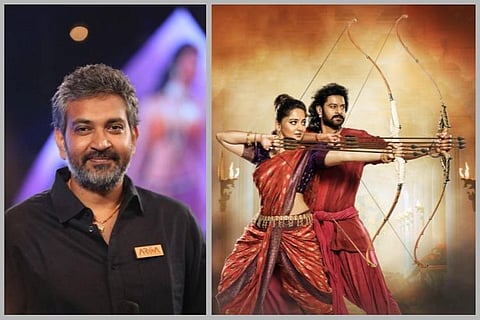

It is a post from 2012, and one which repeats the old-wine-new-bottle trope defending the caste system by stating that it is not about ‘birth’ but ‘actions’. And Baahubali director SS Rajamouli is facing some terse criticism for it now.
And face criticism he must, for his post was not only farcical, but also deeply offensive to Dalits. It glorifies Brahmins and other savarna groups and humiliates Dalits, and is the exact kind of justification which new-age Savarnas use to continue with the caste system.
But what is perhaps more illustrative of Rajamouli’s casteist, racist mindset is his magnum opus, the Baahubali series.
In the first movie, the racism was apparent. The artificially dark skin and savage look of the ‘villains’ clearly fit into our stereotypes of how ‘dark’ is ‘bad’ and ‘dirty’. The Kshatriyas and Brahmans in the movie are light-skinned people, and play the lead roles.
In fact, there is a gradation in Baahubali’s racism. The rulers of Mahishmati are all light-skinned and typically ‘beautiful’, Mahendra Baahubali's adoptive mum (Rohini) is from a tribe, and her clan is brown-skinned - but not as dark-skinned as the villains, the Kalakeya people.
The gradation is so ‘well planned’, the language of the Kalakeyas is apparently supposed to sound ‘Dravidian’ and crude, according to the creator.
In the second movie, there is little of Kalakeya racism, but then the caste-glory takes a front seat. Even the ‘progressive’ Devasena mouths a few deeply casteist lines.
At several points, characters talk about the ‘Dharma’ of the ‘Kshatriya’. Devasena too glorifies her position as a Kshatriya, and says that it her right as a Kshatriya woman to choose who she would get married too.
One could make the argument that this is set in an era of kings and slaves, so it is obvious that casteism would creep in, in the interest of realism. But that argument would fall flat, for at least two reasons.
One, apparently, when it comes to the portrayal of women, Rajamouli was able to remove the sexism in his cinema between part 1 and part 2, as pointed out by Sowmya Rajendran here. So if we can change the usual narratives of women being just eye-candies, we can shed the casteism and racism too.
Two, it is to reimagine ‘reality’ that we have fiction, that we have cinema. A blockbuster like Baahubali is ripe opportunity for us to try and overcome our caste and race biases, not reiterate them.
As we appreciate the magnificent cinema that is Baahubali, and applaud Rajamouli for learning from past criticism of his sexism, let’s not be far behind in calling out other regressive portrayals - and let’s not set the bar low for him when it comes to addressing all social hierarchies.
(Note: Views expressed are the author's own.)